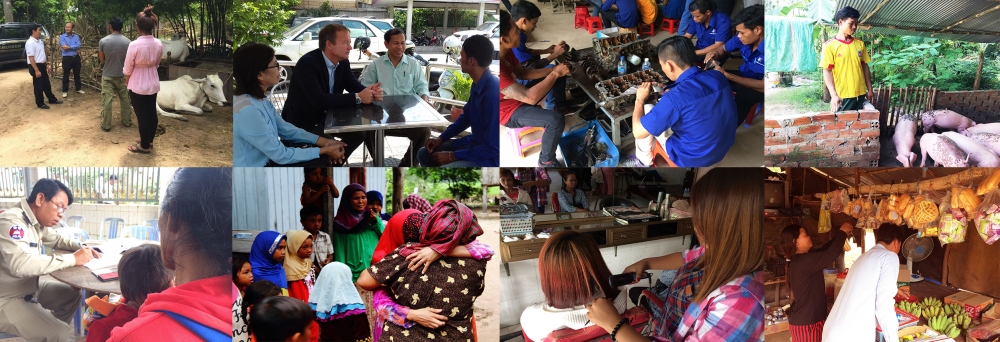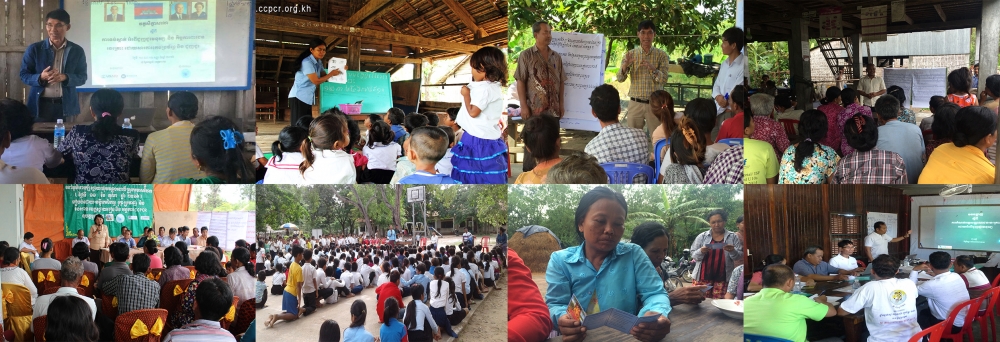Sihanoukville Shelter - Can you help?
December 2010
A CCPCR operated shelter in Sihanoukville opened its doors in 1997. The care grew and land was purchased for a permanent CCPCR supported shelter in 2002, yet had to unfortunately be closed in 2007 due to lack of funding. During the 10 years of operation, the shelter rehabilitated and reintegrated approximately 300 women and girls. Our hope is to open the shelter again, focusing on rehabilitation and reintegration of at-risk girls from Sihanoukville and the surrounding provinces of Kep, Kampot and Koh Kong.
In addition to immediate care and rehabilitation, an objective is to provide training for the girls that will equip them with the skills and knowledge needed to develop income generative programs to help with the self-sustainability of the shelter as well as the re-integration of the girls into their communities. Projects may include: sale of produce grown in the shelter gardens, offering typing and printing services through the computer training program, sale of handicrafts/clothing at responsible trade stores in tourist areas or online at our website.
Our hope is that once the shelter can be sustained once more, our programs could widen to include community education and prevention, investigation and rescue and community support programs.
Help is needed to reopen the Sihanoukville Shelter – can you help?
Budgetary and material needs:
- Maintenance to get the shelter ready for reopening, e.g. new kitchen, outside rubbish removal, painting of walls, general cleaning
- Household items e.g. plates, bowls, cutlery, pots, pans
- Furniture for classrooms and dorm rooms e.g. desks, chairs, tables, whiteboard, bookshelves, lockers, beds
- Annual budget for classroom resources e.g. books, paper, crayons, pens, note pads
- Annual food budget
- Bedding (mattress, sheets and pillows)
- Annual medical and dental budget (to include initial check ups on entry to the shelter and also fund for health care as needed)
- Center Manager, Reintegration Officer, guard and teachers\' salaries (sewing, computers, English and hair dressing)
- Water filter
- Electricity and other utilities e.g. waste disposal
- Office furniture e.g. Secure filing cabinet, desks, chairs)
- Annual budget for hygiene supplies (sanitary pads, disposable gloves, first aid kits, cleaning products, soap, tooth brushes, combs, tissues, rubbish bins)
- Start up capital for vocational training materials e.g. computers, printers and sewing machines
Activities
- Child Pursues Education, After CTIP Supports on Business to Family
- Vulnerable People sharing Experienced on Benefit of Raising Chicken
- Helping Vulnerable Families Improve their Lives
- Trafficking Survivor Sharing Experience of migration
- My Dream Came True as a Barber
- Former Trafficked Victim Got supported to Improve Livelihood
- Livelihood Supported to Pursue Hope
- âMy Dream Come True with Hair Dressing and Salon Businessâ
- Rice Bank Met the Need of People to Stop Risky Migration
- Pig Raising to Improve livelihood of Survivors
- "Cows Bank", is the Resource of Sustainable Livelihood
- We Together to End Human Trafficking
- From Miserable Life to Get a Skill of Hairdressing
- SVG Trained Beneficiary to Be Sustainable Farmer
- Local Leaders Share Lessons Learned and Plan for Sustainable Anti-Trafficking Efforts
- Successful Collaboration to Return 33 victims from Vietnam
- Survivors of Labor Trafficking Receive Support to Pursue Safe and Sustainable Income Sources
- CCPCR Conducts a Chicken and Pig Raising Training for Capacity Building
- 23 Labor Trafficking Victims Were Back to Community Successfully
- Chinese Guests Visited CCPCR to Hear Experience of working with Human Trafficking Victims
- AOI's Students Visited Child Prevention Project
- Collaborative Effort Leads to Successful Repatriation of 54 Cambodian Men Trafficked to Fishing Boats
- Risky Migrationâ Lead to Trafficking Issues
- Livelihood Training Workshop on Chicken and Pig raising to Victims and Victims'family
- 15 Survivors Returnedâ back to Community With New Life
- 4 victims of human trafficking from Vietnam, Returned Back Successfully
- Eleven Trafficked Children to Beg in Vietnam, Returned to Cambodia
- CTIP Secures the Second Chance at Education for 22 Trafficked Children Forced to Beg in Vietnam
- National Verification Process in Thailand
- Press on After Trafficking Launch
- Angkor Wat Bike4Kids! Event
- Radio Australia Broadcast
- Featured in Global South Development Magazine
- A major fundraising campaign for CCPCR!
- CCPCR's Christmas party!
- Painting in Phnom Penh!
- Sihanoukville Shelter - Can you help?
- Lotus House - Siem Reap
Download Document
- Local Leaders Share Lessons Learned and Plan for Sustainable Anti-Trafficking Efforts
- Successful Collaboration to Return 33 victims from Vietnam
- 2015 Annual Report
- Snapshot-Forum Empowers Human Trafficking Survivors to Make Recommendations to Policymakers and NGOs
- Snapshot-Survivors of Labor Trafficking Receive Support to Pursue Safe and Sustainable Income Source
- CCPCRâs Prevention Activities for October
- CCPCR CSO Certificate certified and approved by Minister of Ministry of Social Affair
- Case study - IOM training on representatives of 14 child clubs
- 2014 Annual Report
- Case study - Child Club in Thmei commune
- Case Study - Teng Mao Community
- Case Study - Training on pig farming in Thnout commune
- Case Study - Community Learning Centre in Chres commune
- Case Study - Parental Group in Tuol Ampal village
- Case Study - Child Club in Kandal Village in Thnout
- More than just victims- the truth about human-trafficking
- What are you grateful for?
- Shelter Appeal
- CCPCR's Rehabilitation strategy
- Organizational Chart
- CCPCR's Child Protection Policy
- Human-trafficking in Cambodia
- Human Trafficking FAQ's
- Statement for human rights day, December 10, 2014.
- Current situation on process to migrate to Thailand in EN
- Current situation on process to migrate to Thailand in Kh
- 2013 Annual Report
- 2012 Annual Report
- Svay Rieng Shelter
- 2011 Annual Report
- 2010 Annual Report
- Svay Rieng Presentation 2010
- CCPCR's Rehabilitation strategy



